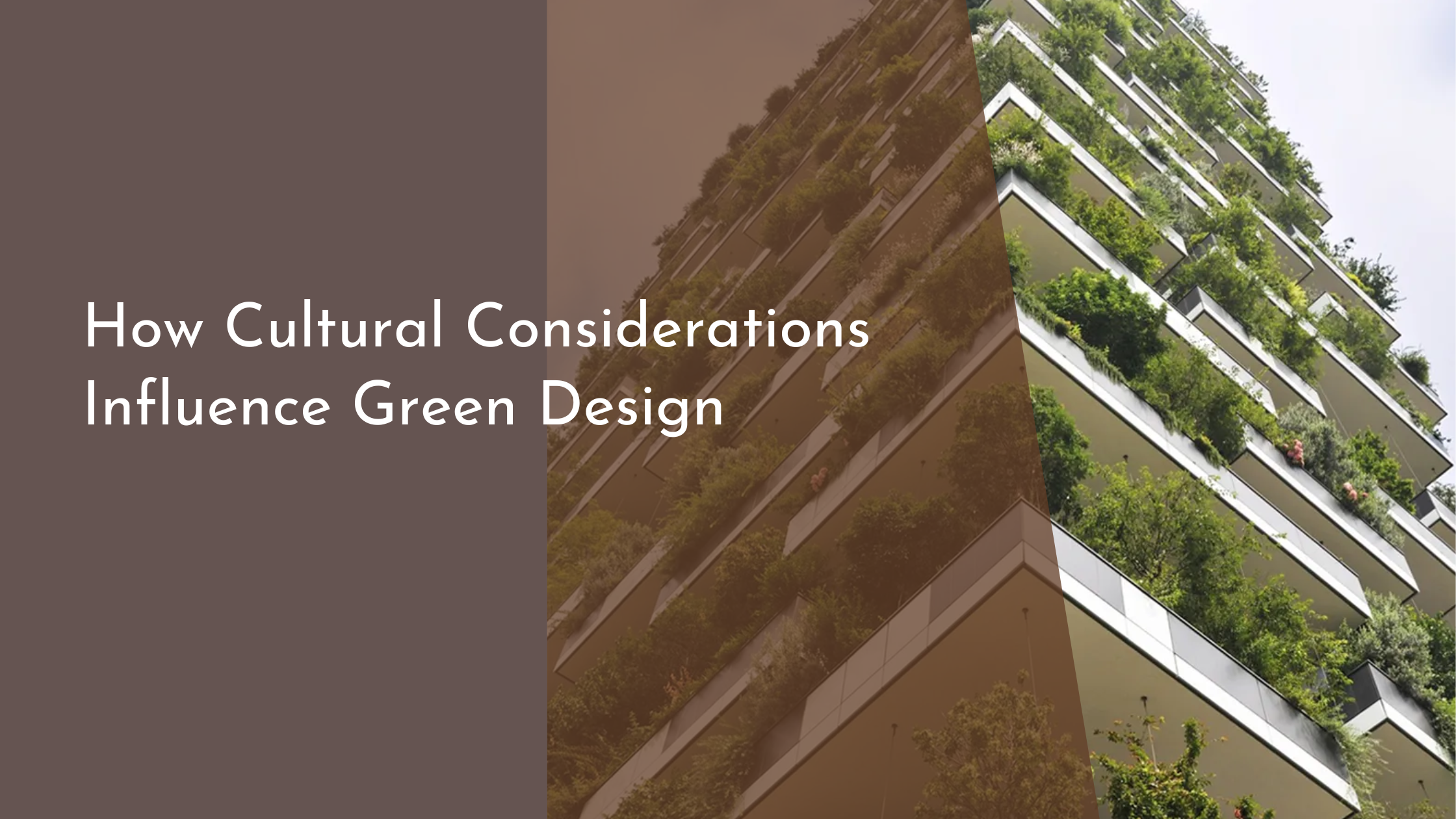How Cultural Considerations Influence Green Design
Green design, also known as sustainable design, has become a hallmark of innovation aimed at reducing environmental impact while maintaining aesthetic appeal. However, these efforts don’t exist in a vacuum; they are deeply influenced by the cultural contexts in which they are applied. Whether it’s leveraging traditional practices, choosing local materials, or balancing aesthetic values with sustainability, cultural considerations play a crucial role in shaping the future of green design. This article explores how understanding and embracing cultural nuances can lead to more effective and aesthetically pleasing green innovations.
Understanding Cultural Nuances in Green Design
When considering green design, cultural nuances are essential in determining the effectiveness and acceptance of sustainable practices. Different cultures have varying relationships with the environment, which can influence how green design concepts are received. For instance, cultures with a strong tradition of conservation and respect for nature may be more receptive to sustainable practices. This understanding can lead to the development of designs that resonate more deeply with local communities, making them more likely to adopt and maintain green initiatives.
Moreover, cultural nuances can dictate the parameters of what is considered aesthetically pleasing and functional. In some cultures, minimalism and the use of open spaces may be highly valued, while in others, intricate designs and the use of vibrant colors might dominate architectural preferences. By taking these preferences into account, designers can create green solutions that not only serve environmental objectives but also align with cultural aesthetics and functional priorities.
Incorporating Local Traditions and Materials
One of the most effective ways to integrate cultural considerations into green design is by incorporating local traditions and materials. Using materials that are native to the area not only supports local economies but also reduces the carbon footprint associated with transportation. For example, bamboo, a fast-growing and renewable resource, is widely used in Asia for its strength and flexibility in construction. By utilizing such materials, designers can create structures that are harmoniously integrated into their environments while promoting sustainability.
Local traditions also provide a wealth of knowledge and techniques that can enhance green design. Traditional methods of heating, cooling, and lighting buildings can offer sustainable alternatives to modern, energy-intensive systems. For instance, using natural ventilation and passive solar heating, techniques utilized in various indigenous communities, can significantly reduce energy consumption. By respecting and incorporating these time-tested traditions, designers can create more sustainable and culturally resonant designs.
Balancing Aesthetic Values and Sustainability
A key challenge in green design is balancing cultural aesthetic values with sustainability goals. While the primary aim of green design is to minimize environmental impact, it is equally important for these designs to be aesthetically pleasing to the communities they serve. If a design does not resonate visually or culturally, it may not be well-received, regardless of its sustainability credentials. This requires designers to engage with local communities, understand their aesthetic values, and integrate these into sustainable design practices.
Effective green design often involves a delicate interplay between traditional aesthetics and modern sustainable techniques. This balance can be achieved through the thoughtful integration of local art, symbols, and patterns into the design, ensuring that sustainability does not come at the expense of cultural identity. In doing so, designers can produce work that is not only environmentally responsible but also culturally enriching, enhancing both the immediate surroundings and the broader cultural landscape.
Embracing Cultural Diversity in Green Innovations
Cultural diversity presents a wealth of opportunities for innovation in green design. By drawing inspiration from a variety of cultural perspectives, designers can develop unique solutions that address environmental challenges in novel ways. This diversity can lead to the cross-pollination of ideas, fostering innovation that might not emerge within a single cultural context. For example, the integration of Scandinavian minimalism with the vivid colors and patterns of African design can result in innovative, sustainable structures that appeal to a wide audience.
Embracing cultural diversity in green design also encourages inclusivity and broadens the appeal of sustainable practices. When different cultural perspectives are valued and incorporated into design processes, it can lead to more equitable and accessible green innovations. This inclusivity not only enriches the design process but also ensures that sustainable solutions are more widely adopted and celebrated across different communities, contributing to a more sustainable and culturally vibrant future.
In conclusion, the intersection of culture and green design is a fertile ground for innovation and sustainability. By understanding and incorporating cultural nuances, local traditions, and diverse aesthetic values, designers can create environmentally friendly solutions that are not only effective but also resonate deeply with the communities they serve. As we continue to strive for a more sustainable future, embracing cultural diversity will be key to developing green innovations that are both culturally meaningful and environmentally impactful.

